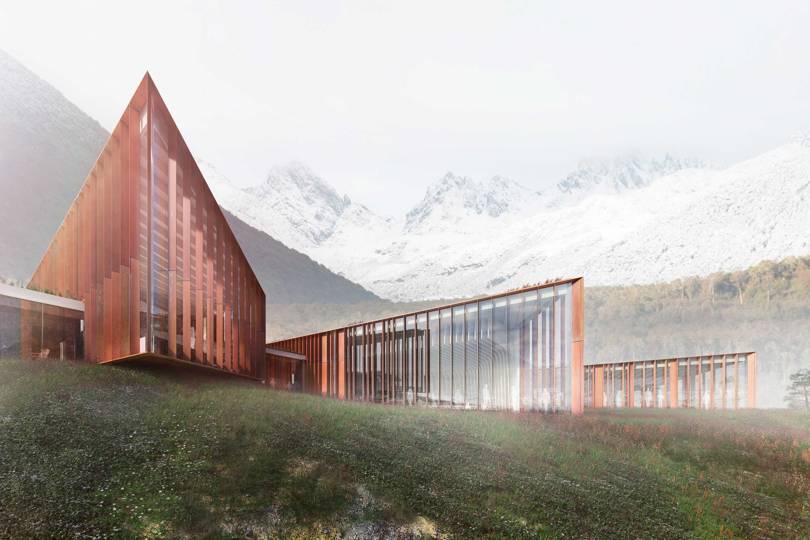
Cape Horn Sub Antarctic Research Centre, Navarino Island, Chile COURTESY
Around the world, scientists and researchers are tackling some of the planet’s biggest problems – such as climate change, environmental degradation and rising sea levels – at their source. In order to achieve this, a series of research facilities and laboratories are being built in extreme environments, such as in the Antarctic, deep underwater and nestled alongside remote ecosystems. The work done there will help us redefine our relationship with the natural world – and even provide insight as to how to begin new lives on other planets – while also providing forward-thinking architects with opportunities to re-imagine what a scientific laboratory can look like.
Deep water
Work begins in 2021 on Proteus, which when complete, will be the world’s most advanced underwater scientific research station. A collaboration between Swiss designer Yves Behar and the US-based Fabien Cousteau Ocean Learning Center, the complex will span over 371 square metres and be powered by ocean, solar and wind energy. The structure will include pod apartments for visitors and an underwater greenhouse kept temperate by thermal energy.
Sub-zero temperatures
Warsaw-based Kurylowicz & Associates will refurbish the 40-year-old research station in 2021. The building will be raised three metres above ground, which will allow water, wind and snow to move underneath the structure, and it will have a new greenhouse for the 29 residents to grow their food. Power will come from nearby wind turbines.
Eco-friendly buildings
Designed by Ennead in New York and Chilean architects Cristian Ostertag Chavez and Grupo Cuatro, this lab is scheduled for completion in 2021 and will be used to study local ecosystems. Its three pavilions will be clad in pre-weathered steel and the green roofs will collect rainwater.
The desert
Interstellar Lab’s EBIOS will begin construction in California in 2021. A carbon-neutral village made of glass-clad domes, it will generate water, food and energy for 100 people as part of a trial for living on other planets. Rooms will be available to rent for up to $6,000 per week.






0 Comments